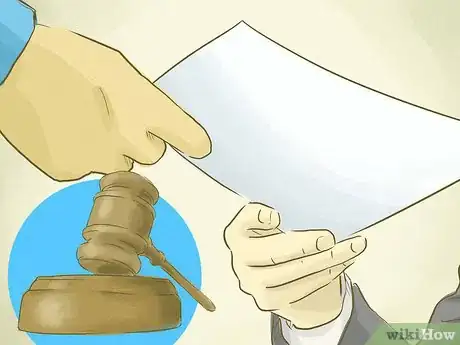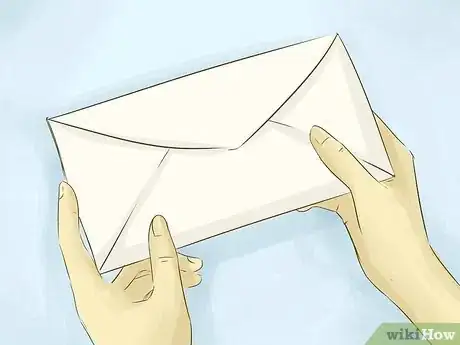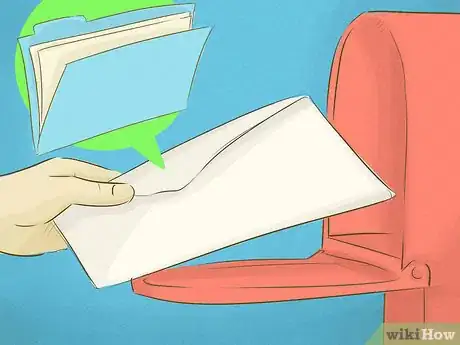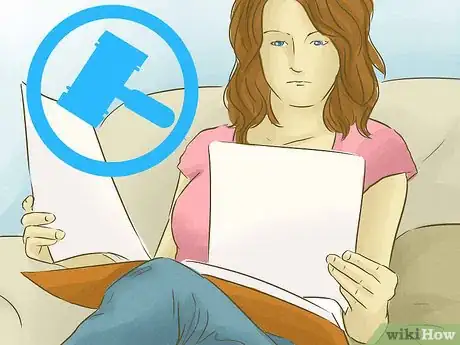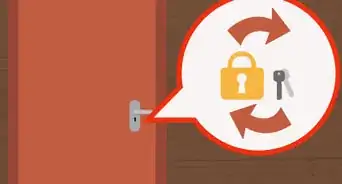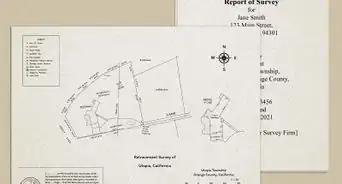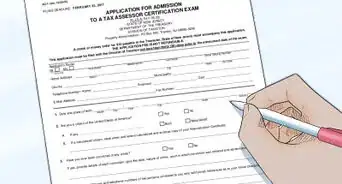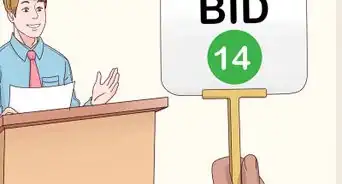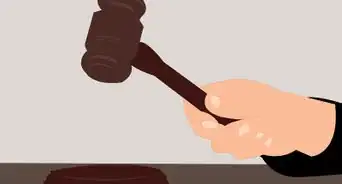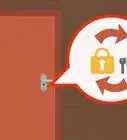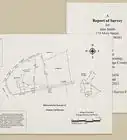This article was co-authored by Clinton M. Sandvick, JD, PhD. Clinton M. Sandvick worked as a civil litigator in California for over 7 years. He received his JD from the University of Wisconsin-Madison in 1998 and his PhD in American History from the University of Oregon in 2013.
There are 13 references cited in this article, which can be found at the bottom of the page.
This article has been viewed 187,521 times.
Landlord-tenant laws vary from state to state. But no matter where you live, you’re going to have to serve (deliver) an eviction notice on a tenant in order to begin formal legal proceedings with the court to have the tenant vacate the property. Knowing which eviction notification forms to use—and how to legally serve the tenant with them—is crucial to your success in evicting the tenant from your property.
Steps
Preparing to Serve the Eviction Notice
-
1Determine if there are any pre-requisites. Landlord-tenant eviction proceedings are governed by the laws of each state, so you have to be sure you’ve met all your state’s requirements before serving eviction papers.
- Check with your local landlord-tenant court—either in person or online at the court’s website—for instructions on handling an eviction, including any notices you may have to give the tenant before serving eviction papers.
- An example of a pre-requisite is a Notice to Cure, in New York. This has to be served on a tenant before serving an eviction notice. It tells the tenant what he or she did wrong, and provides for a ten-day period to correct the problem.[1] )
-
2Obtain the appropriate eviction forms. It depends on your state, but you'll commonly find the eviction notice referred to as a Notice to Quit, Notice to Vacate, or Notice of Termination. This is normally combined with a Demand for Possession (of the premises). You can usually get these forms from the court's website or at the court clerk's office.Advertisement
-
3Make sure your eviction papers are in order. Before serving the papers on the tenant, make sure the contents of the notice completely comply with the form's instructions. Again, the needed information will depend on your state's laws, but some common information to include is:
- The full name of the tenant or tenants. (You want to be sure everyone you’re seeking to evict is on the notice.)
- The date by which you want the tenant to leave the property.
- The reason for the notice (such as failure to pay rent or breaching specific terms of a lease).
- The date by which the tenant must cure (remedy) the problem in order to avoid eviction.
- An indication that you intend to hold the tenant responsible for any current and future rent or other fees due, under the terms of the tenancy.[2]
-
4Decide who will be serving the tenant. Someone has to deliver the eviction notice to the tenant. In many—if not most—cases, the landlord is permitted to do this. However, some states (like New York) prohibit the landlord from serving papers.
- Find out what’s permitted in your state. If you’re allowed to serve the papers yourself and you choose that option, always bring a witness to corroborate exactly what you did. You might also think about having a friend or family member (over the age of 18) deliver the papers, again if your state allows it. Note that normally this person can’t be involved in the lawsuit.[3]
- Consider using a professional process (legal papers) server. Many times these are personnel in the local Sheriff’s or Marshall’s office. You can also use a private process server, if your state approves of that.[4]
-
5Learn the permissible times to deliver the papers. Many states will limit the time of day during which you can serve papers on a tenant (such as 6 a.m. to 10 p.m.), as well as prohibiting serving papers on particular days, like Sundays or certain holidays.[5]
Employing the Various Service Methods
-
1Use personal service. This is universally considered the best procedure for serving an eviction notice on a tenant. You literally hand the papers to the tenant, so there’s no dispute as to whether or not he or she received them. As mentioned above, it’s advisable to have a witness if anyone other than a professional process server does the job. This helps you to prove that service was made in case a tenant refuses to admit that he or she received the papers.[6]
-
2Employ “substituted service”. Depending on your state laws, this is usually permitted if you’ve been unable to deliver the papers directly to the tenant. In many states, substituted service is the name given to the procedure of hand-delivering the eviction papers to someone in the tenant's residence other than the actual tenant.[7]
- In some states, you may only be allowed to serve the papers on an adult at the residence.[8]
- Other states may permit service on a person of suitable age and discretion (basically someone who would be considered “responsible”) who lives or works in the tenant’s home. In other words, it can’t be a stranger or visitor and certainly not a young child.[9]
-
3Utilize “conspicuous service” if necessary. This method of serving the eviction notice is more commonly known by the slang “nail and mail.”
- The "nail and mail" process involves affixing the notice of eviction to the door of the tenant’s premises or slipping it under the door of the residence.
- Determine how your local law applies, particularly when this type of service can be used. Many times it’s not allowed unless you’ve exhausted attempts at using the other methods of serving the papers.[10]
-
4Mail copies of the papers to all tenants included in the notice. You’ll need to mail a copy of the eviction notice to the tenant(s) if you used the “nail and mail” method and some states may also require you to mail the notice if you used substituted service.
- Send any mailings by certified mail - return receipt requested (RRR) and also by regular mail. Although many states will specify this, do it even if it’s not mandated.
- With certified mail RRR, you’ll have the return receipt as proof of delivery. If the tenant is dodging the notice, the certified mail may come back as undelivered, but odds are the regular mail won’t (since it can be delivered without the tenant having to sign for it or pick it up). You’ll still have the undelivered certified mail as proof that you attempted to send it by that method.
- Send a separate mailing of the eviction notice to each of the tenants listed on the notice. You want everyone in the premises to vacate so don’t give someone a possible defense that he or she wasn't specifically given notice to leave the property.[11]
- Send the notices no later than the next business day if possible, as some states set a time period for mailing the notices.[12]
- Send any mailings by certified mail - return receipt requested (RRR) and also by regular mail. Although many states will specify this, do it even if it’s not mandated.
Following Up on Service
-
1Retain copies of all paperwork you’ve served. Make sure you have copies of everything you served on the tenant including the notice of eviction as well as the proof of how you served the tenant with the notice. If you weren’t able to serve the tenant personally, keep a log of each and every time you attempted to do so.
-
2Keep track of return receipts. Be on the lookout for either the return receipt from your certified mailing or the actual certified mail returned as undelivered.
- This is your proof that you followed the state’s laws in attempting to serve the tenant with the eviction notice when mailing was required.
- If you don’t get either the return receipt or the undelivered certified mail back within the normal time period for your location, go to the post office to track its whereabouts.
-
3Find out what papers need to be deposited with the court. Check with the court’s website or the court clerk’s office to determine if you need to bring proof of service of the eviction notice to the court within a certain period of time.
- Sometimes you may only have to bring this documentation when you file (start) the actual eviction complaint (formal legal court proceeding). Other courts may want you to deliver the proof to them before filing the complaint, sometimes as soon as three days after you serve the eviction notice.[13]
- If your state requires you to attempt personal service before using any other method, contact the court clerk’s office to see if the court will want to see proof of the efforts you made to effectuate personal service.
-
4Determine how long you have to wait to file the eviction complaint. Look online or call the court clerk, to get an exact date when you can actually file the eviction complaint with the court. Your method of service will probably influence that date. For example, if you had to send a notice by mail, the court will usually delay the date by which you can file the complaint to compensate for the time it normally takes for the mail to be delivered.
Warnings
- If the legal notices in a case aren’t served the right way, the judge can dismiss your case and you will have to start the process all over.⧼thumbs_response⧽
- If you are evicting a school such as an elementary, middle school, or high school, you will need to let the government know by providing evidence (including photos) of the incident such as property damage and have them judge the legal consequences for schools.⧼thumbs_response⧽
- Don’t try to evict a tenant without using the proper legal procedures. In many states this is illegal. Avoid taking actions such as:
- Changing the locks
- Padlocking the doors
- Removing the tenant's furniture or personal property
- Removing the door of the apartment or house
- Turning off the electricity, water, or any other utility
- Doing anything else that keeps the tenant out of the house or apartment[16]
⧼thumbs_response⧽
References
- ↑ http://nycourts.gov/courts/nyc/housing/pdfs/tenantsguide.pdf
- ↑ http://www.alllaw.com/forms/leases_and_tenancies/landlord_notice_to_vacate
- ↑ http://www.nolo.com/legal-encyclopedia/free-books/small-claims-book/chapter11-4.html
- ↑ http://www.nolo.com/legal-encyclopedia/free-books/small-claims-book/chapter11-4.html
- ↑ http://www.nycourts.gov/courts/nyc/housing/pdfs/Landlordbooklet.pdf
- ↑ http://www.nolo.com/legal-encyclopedia/free-books/small-claims-book/chapter11-4.html
- ↑ http://www.serve-now.com/articles/501/substituted-service
- ↑ http://www.serve-now.com/articles/501/substituted-service
- ↑ http://www.nycbar.org/pdf/report/tenantsguide.pdf
- ↑ https://www.nycourts.gov/courts/nyc/housing/servicenoticeofpetition.shtml
- ↑ http://www.nycourts.gov/courts/nyc/housing/pdfs/Landlordbooklet.pdf
- ↑ http://www.nycourts.gov/courts/nyc/housing/pdfs/Landlordbooklet.pdf
- ↑ http://www.nycourts.gov/courts/nyc/housing/pdfs/Landlordbooklet.pdf
- ↑ http://www.lectlaw.com/def2/s034.htm
- ↑ http://www.nycourts.gov/courts/nyc/housing/pdfs/Landlordbooklet.pdf
- ↑ http://www.lawny.org/index.php/housing-self-help-141/housing-and-eviction-self-help-142/48-general-eviction-information

